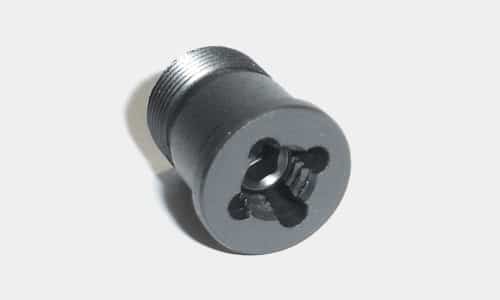Sibling Rivalry? The Italian BM 59
September 7th, 2021
9 minute read
If you’re a fan of the M1 Garand family of firearms, you likely know the full story of the development of this amazing firearm.
Robust, reliable and powerful, the Garand served from World War II through Korea and well beyond. Additionally, it spawned the development of the classic M14 rifle, and its civilian-legal sibling, the Springfield Armory M1A rifle.
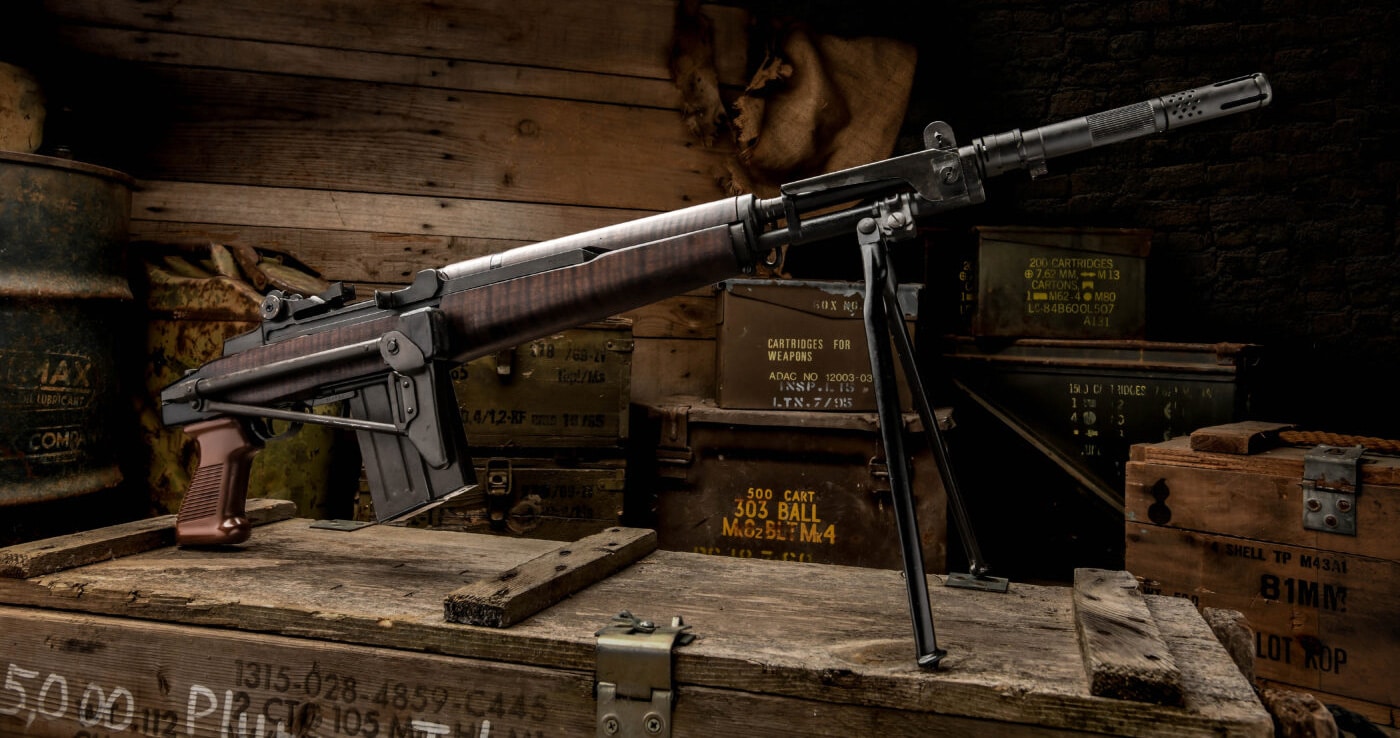
But, do you know the story of these guns’ Italian sibling, the BM 59?
If not, you’d be forgiven for thinking the guns you are seeing in these pictures were M14 variants, but a closer look will likely encourage a lot of questions on your part.
The Background
The BM 59 was born of Italy’s need for an economically priced select-fire main battle rifle at the beginning of the Cold War. But to understand how and why the BM 59 was developed, we need to go even further back in time to the 1930s.
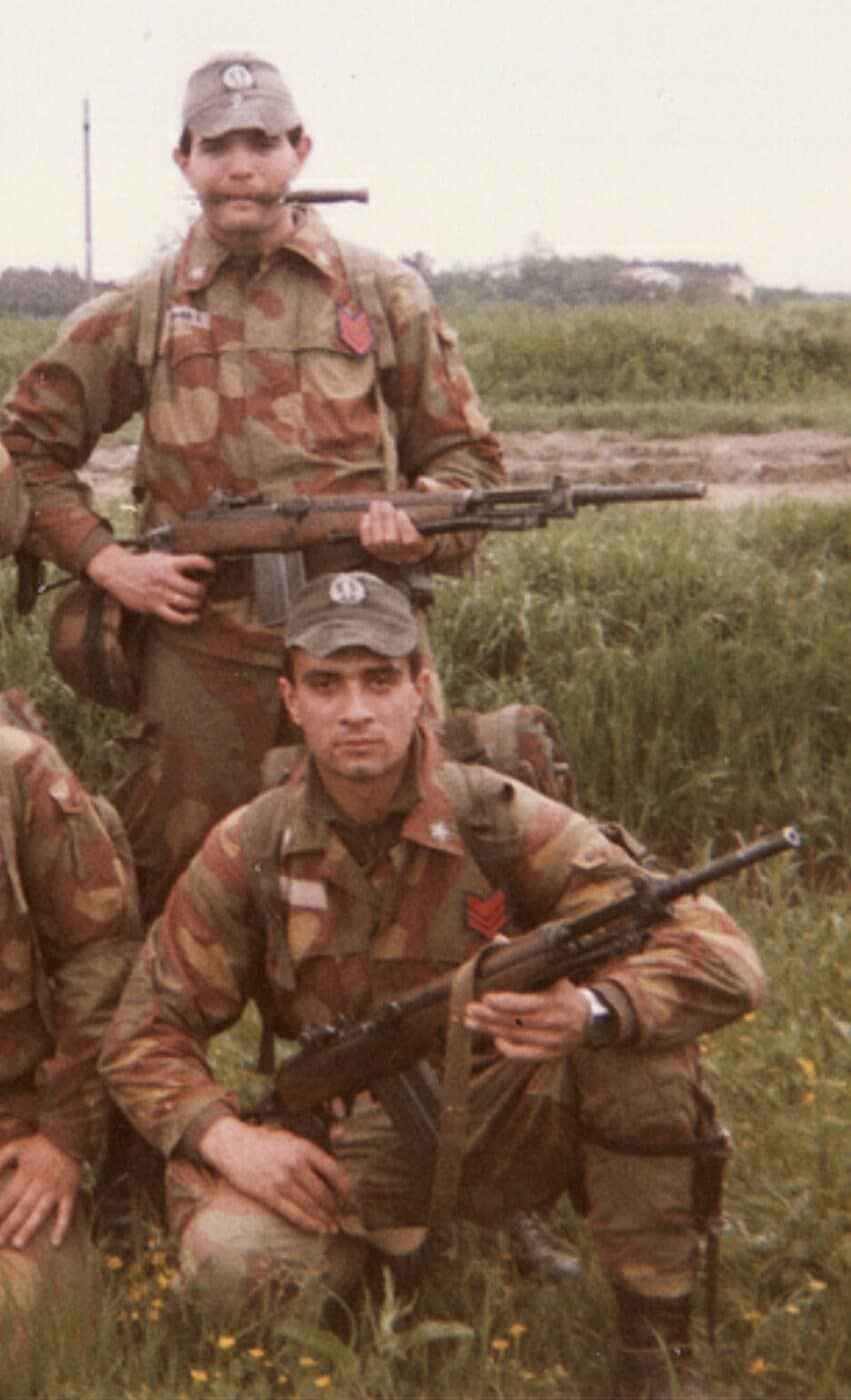
If you’ve ever thought John Garand’s M1 rifle should have had a detachable box magazine, you’re not alone. However, American military thinking wasn’t there yet when the M1 was under development — despite the fact that the World War I-era BAR had one. Browning even had prototypes of the T1919 and T1920 with detachable magazines.
Despite this initial reluctance, by the early 1950s, the concept of how a military rifle should be configured had shifted and resulted in the evolution of the M1 into the 7.62x51mm (.308 Win.) M14.
So, the United States had a new military cartridge as well as a new rifle, and members of the recently created North Atlantic Treaty Organization (NATO) faced the conundrum of how to standardize their small arms for compatibility — a potentially expensive project.
What was Italy’s answer? Adapt a proven rifle design they already had on hand.
The Solution?
The BM 59 is easily one of the lesser-known rifles of the Cold War. Compared against the M14, FAL and G3, it’s downright obscure.
The original BM 59 .308-caliber rifle is capable of semi- or full-automatic fire, and it feeds from a detachable (and proprietary) box magazine held 20 rounds of 7.62×51 and was reloadable from a stripper clip bridge on the receiver.
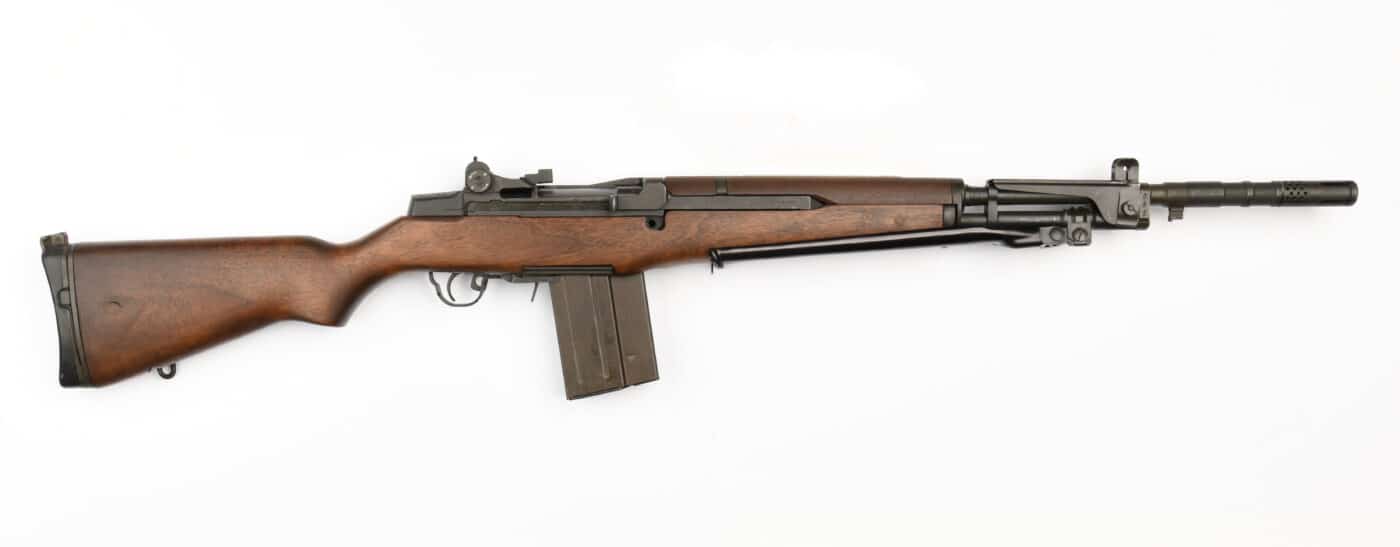
The rifle has a familiar but still distinctive profile, including an integral folding bipod and combination muzzle brake, rifle grenade launcher, flash hider and grenade launching sight. With all these features, it weighed in at more than 10 lbs. empty.
Developed and manufactured by Beretta and selected as Italy’s service rifle in 1959, it remained so until it was replaced by Beretta’s 5.56mm NATO AR70/90 near the end of the Cold War-era. Italian reserve units and naval units used the BM 59 even longer.
While the 5.56mm may be the undisputed champion of military cartridges today, the BM 59 emerged at a time when the .30-caliber cartridge was still preferred for infantry rifles. The allied Free-World nations in NATO, the major bulwark opposing and containing the spread of communism, saw the benefits of sharing a common cartridge, and at that time it was the 7.62x51mm round.
So how to accomplish this without spending an inordinate amount of money?
Italian Garand
At this time, the Italian Army was already equipped with M1 rifles in .30-06. Additionally, post-war Italy was producing the rifle on tooling it had acquired from the United States. So, the BM 59’s origin story actually begins right after World War II with the Italian adoption of the American M1 Garand as their main service rifle.
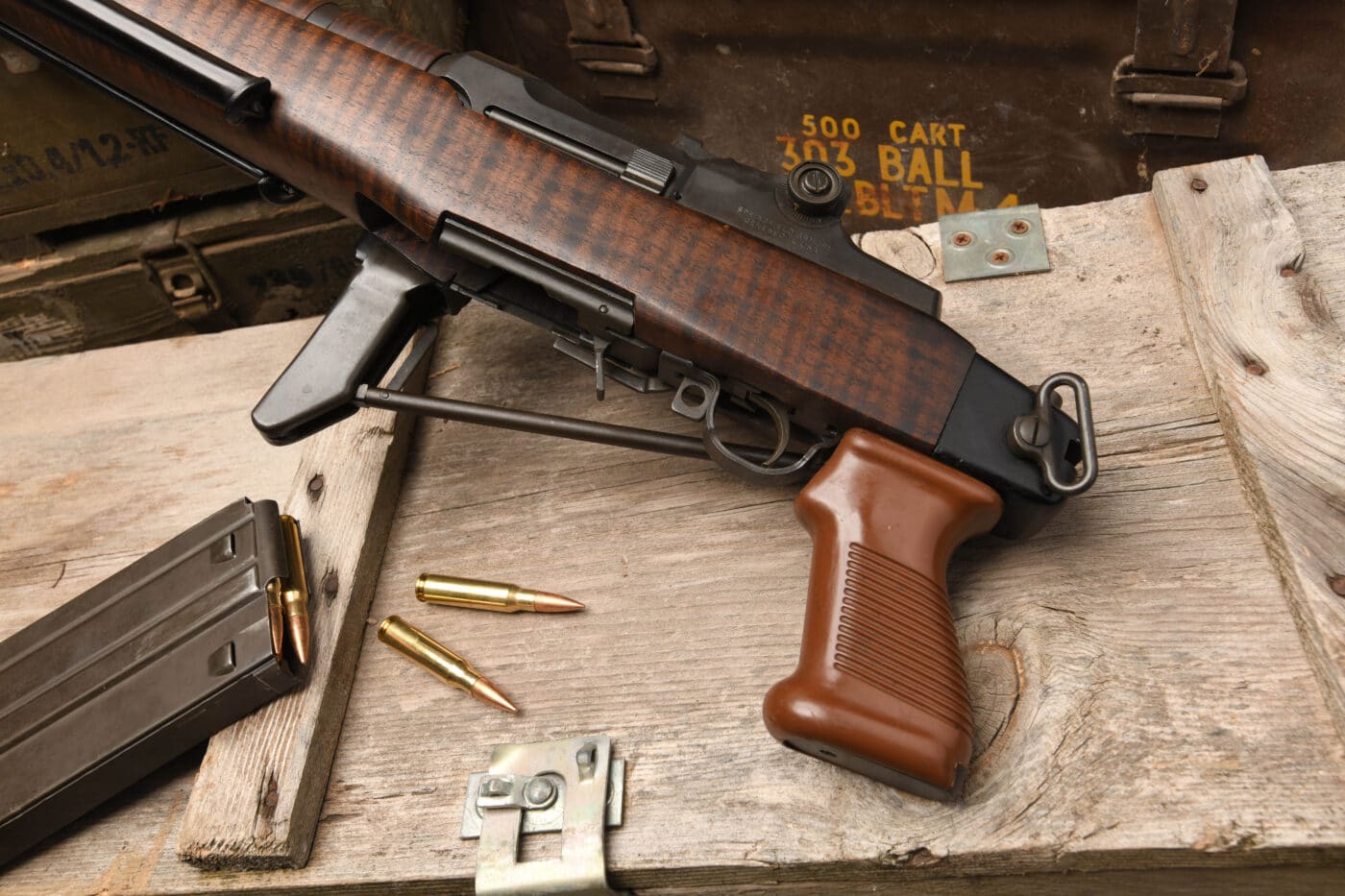
In Italy, licensed production of M1s for the Italian government began in the early 1950s, and rifles were also sold to American allies. However, by the mid-1950s it was obvious that the Free World nations were about to field a generation of refined rifles to counter the then-new Soviet AK-47. Compared to the firepower of these new select-fire rifles, the 1930s-vintage, semi-automatic M1 with its eight-shot en-bloc clip was a dinosaur.
Italy was in rough shape financially for a long time after World War II. Their country had been a battleground, and recovery and reconstruction in the post-war years was slow and costly. A brand-new battle rifle just wouldn’t fit their budget, but it made a lot of sense to explore converting the tens of thousands American MAP (Military Assistance Program) M1s they had already received from the United States, in addition to the fact that Italian factories were already tooled up to produce the M1.
An examination of 4,000 BM 59 parts kits imported a few years ago showed Italian army rifles were commonly a mix of American surplus and Italian made or modified parts. For example, you might find one rifle with a Springfield Armory rear sight drum and another with an Italian one marked “BM”. Often, parts bore both U.S. and Italian markings.
Compared to its 7.62x51mm peers (the M14, FAL and G3), the BM 59 was a true bargain. Realizing its export potential to other cash-strapped nations, the Italian makers marketed the BM 59 to friendly nations through the 1960s and early 1970s. For countries already using the M1 rifle, the BM 59 was an easy transition for the troops. Some of those countries also paid license fees to convert their M1s into BM 59s. Various models were sold or licensed to nations in South America, Africa and beyond.
BM 59 Magazines
The main issues in converting the M1 to a BM 59 involved the adaptation to the shorter cartridge, modifying the design to select-fire and adapting it to a detachable box magazine. A new, robust and finely made steel 20-round magazine was designed for the BM 59.
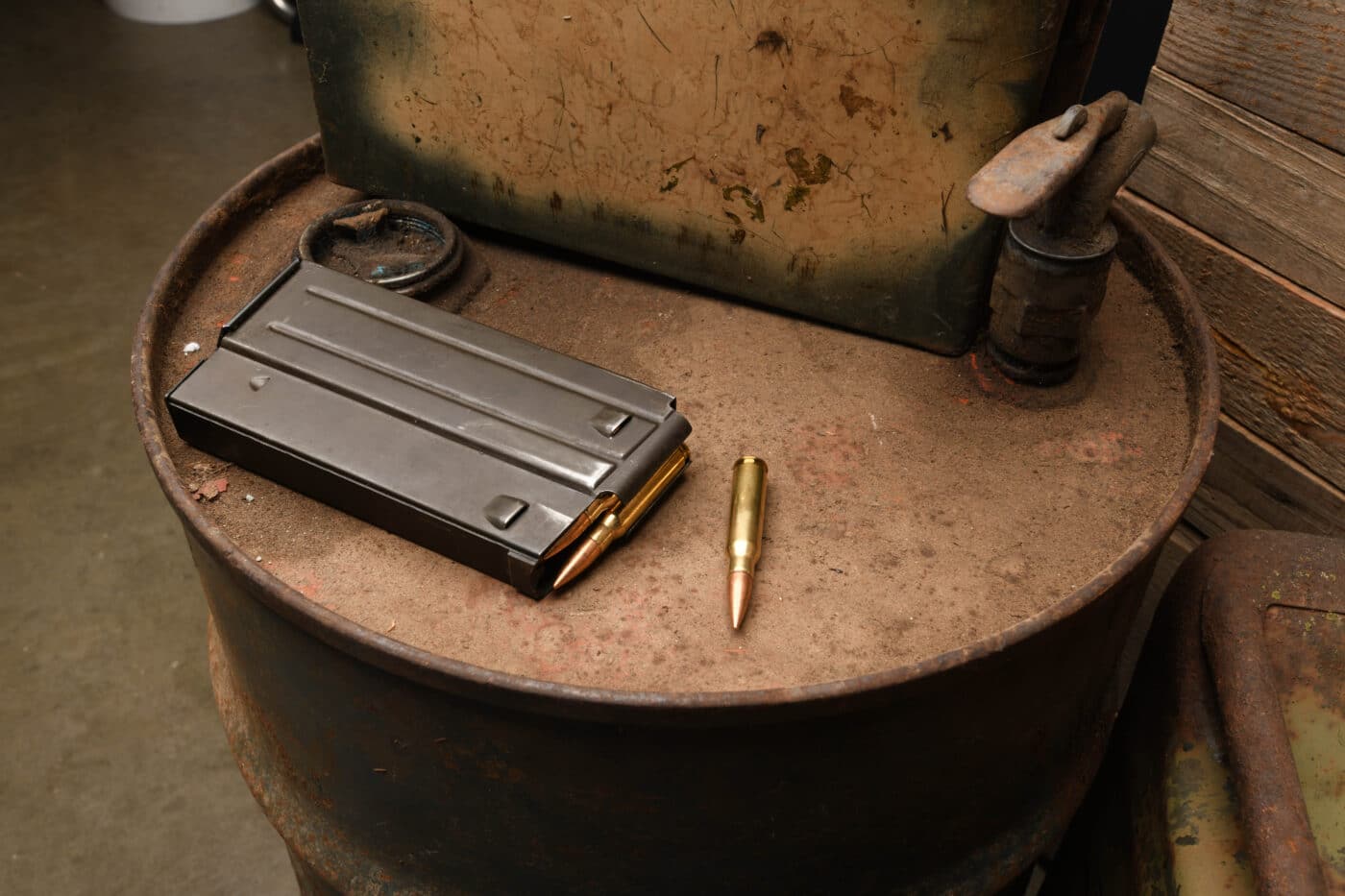
In my opinion, they are the finest magazines you’ll ever see. They have a milled steel cartridge guide in the front, a chromed follower, front and rear locking points, and two stops on each side of the body to engage matching flats cut into the sides of the receiver legs and prevent upward movement of the magazine.
Bolt and Trigger Groups
The M1’s bolt and extractor required modification to clear the magazine feed lips, and the trigger group was milled out and adapted to house a magazine release lever. In the receiver, the M1’s old en-bloc related parts were removed and the guides for them milled away to accommodate the magazine and a clever combination bullet feed guide, front magazine catch and operating rod spring guide base.
To make the BM 59 select-fire, the trigger group was modified and a sear trip lever and selector lever added. The selector switch on the side of the receiver ring could switch between semi-auto aimed fire (rearward) and full-auto fire (forward).
The caliber conversion problem was solved with eloquent simplicity by cutting off the original .30-06 barrel’s breech end enough to accommodate the shorter 7.62 NATO round, re-cutting the threads and rechambering it. To make the BM 59 handier, the barrel was shortened at the muzzle so the overall barrel length dropped from 24″ to 19.3″. In the early 1960s, the Italians started producing their own hammer-forged barrels for the BM 59.
Additional Changes to the Italian M1
To adjust for the rifle’s shorter sight radius and the different ballistics of the 7.62 NATO round, a taller (and also thinner for more precision) front sight post was used. No changes were made to the MOA clicks of the rear sight.
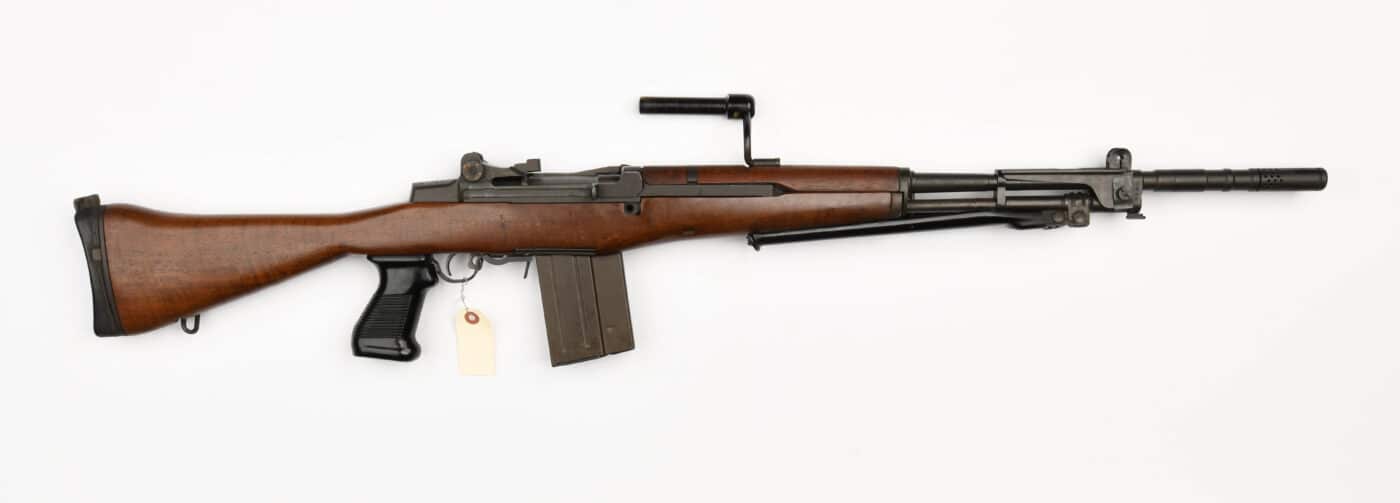
The M1 rifle’s forward handguard was eliminated and the operating rod comparably shortened, leaving a distinctive gap between the front of the stock and the rear of the gas cylinder. Shortening the rifle also allowed simplification of the operating rod design. All in all, these modifications were vastly easier than designing, testing and building a new rifle from scratch.
BM 59 stocks are slightly shorter at the forend then standard M1 rifle stocks. In the initial production, cut-down M1 rifle stocks were used that were straight G.I. issue down to the buttplate. The Italians eventually made stocks that incorporated a recoil-moderating rubber buttpad. For mountain and parachute troops, a compact, side-folding buttstock with a vertical pistol grip for better control in full-auto fire was created.
New BM 59 Parts
The Italians added a lot of new components to the new BM 59. These included the following:
- A stripper clip guide on the top of the receiver to allow the rifle’s magazine to be recharged from five-round stripper clips
- A bolt hold-open button where the clip release was on the M1
- A strong but slim integral folding forged steel bipod
- A rubber recoil pad on the butt
- A redesigned vented gas cylinder with the usual sight base plus a belt for mounting the bipod
- A sheet metal flip-up grenade launching sight
- An excellent newly designed Tri-Compensator that served as a flash-hider, muzzle brake and 22mm diameter NATO grenade launcher
[For additional information on the manufacturing process, read Will Dabbs’s article on forged vs cast steel.]
When the BM 59 grenade sight is raised for use, it automatically engaged a gas cut-off valve to vent excess gas out of the gas cylinder and protect the rifle from damage when firing grenades.
Grenades were aimed by placing the tip of the grenade on the sight range graduations appropriate for the target. The rifle was operated as single shot when launching grenades.
In Practice
Compared to the M1 rifle, the shorter BM 59 gas system cycles the gun faster and harder. The BM 59 extractor is also 30 percent smaller than the M1 rifle’s to clear the magazine feed lips. Unreliable extraction can occur if the rifle is fired with commercial ammunition. In fact, you might find the extractor ripping the rims off soft commercial brass cases and leaving the case in the chamber. The BM 59 was designed to shoot military ammo which uses harder brass cases than commercial loads. If you stick to military ammo, you shouldn’t expect any problems.
To save wear and tear on a BM 59 you may own, the action can be effectively tamed down by replacing the gas cylinder lock screw with a Schuster M1 Adjustable Gas Plug. This will allow easy regulation of the otherwise sealed system.
Despite its exuberant cycling, the BM 59’s weight and Tri-Compensator muzzle brake make it comparatively gentle on the shoulder and easy to keep on target in rapid-fire since muzzle rise is greatly diminished. Its simple and strong bipod makes prone shooting about as stable as it can be without sandbags. Between the good muzzle brake and good bipod, the BM 59’s full-auto 800 rpm cyclic rate was easier to keep under control when the rifle was used for suppressive fire.
BM 59 Variations
While the Italian military used a few basic models, there are numerous variations, including those made for export or under license.

The infantry model had a full wooden stock and 19.3″ barrel, the Alpini (mountain troop model) a side-folding stock with the same 19.3” barrel, and the Paracadutisti (paratrooper) had the folding pistol grip stock, a shorter 18.4” barrel and a detachable grenade launcher on the Tri-Compensator.
Beyond that, many model variations were developed for export or licensed production.
U.S. Import Variants
Only a few Italian-made, select-fire BM 59 rifles were imported into the United States before all importation of machineguns stopped in the 1980s. Beretta made semi-auto-only versions for export too, but they are quite rare.
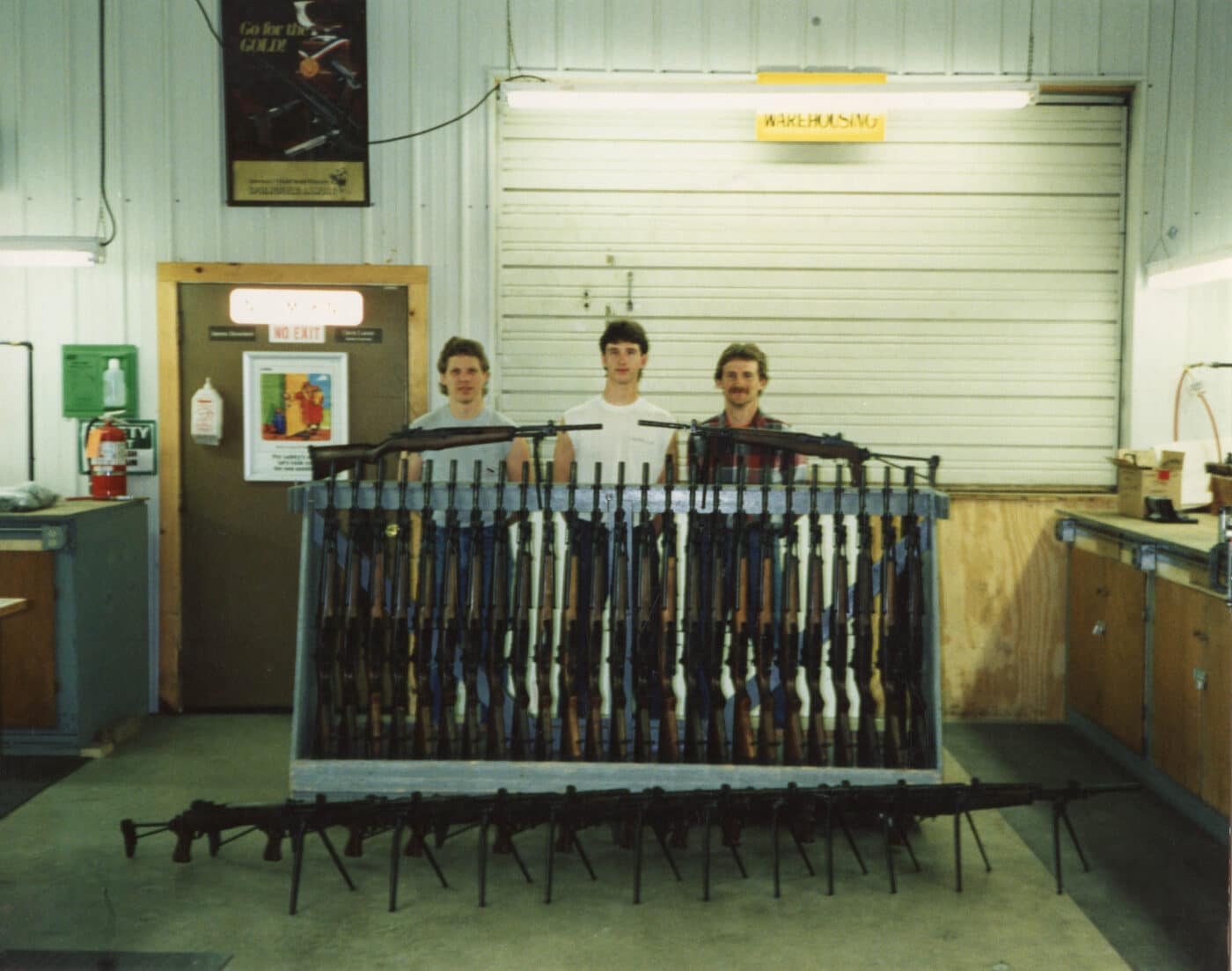
Springfield Armory offered civilian-legal, semi-auto-only BM 59 rifles for a time, built with original parts kits on Beretta-manufactured receivers. However, these are quite rare these days as they have not been produced for many years.
Combat History
Unlike the FAL, M14 and G3 rifles, which have seen sustained combat around the world, the BM 59 was fired in anger only in small conflicts during the Cold War.
Some saw battle in the hands of federal forces during the Nigerian-Biafaran Civil War (1967-1970). Some, manufactured under license, were used by the Indonesian Army against British forces in Malaysia. Some Argentinian soldiers used the BM 59E in the 1982 Falklands War.
The BM 59 was also the main rifle of the Italian army when they deployed to Lebanon with the Multinational Force (MNF) for a peacekeeping mission in the early 1980s.
Final Thoughts
The BM 59 is a fascinating footnote in not only the history of Cold War-era military rifles but also the evolution of the M1 Garand rifle beyond its beginnings in the 1930s. Developed in parallel to the U.S. M14, the Italian BM 59 represented a unique adaptation of the Garand and resulted in a truly unique sibling to the Garand-based American M14.
Editor’s Note: Please be sure to check out The Armory Life Forum, where you can comment about our daily articles, as well as just talk guns and gear. Click the “Go To Forum Thread” link below to jump in and discuss this article and much more!
Join the Discussion
Featured in this article
Continue Reading
Did you enjoy this article?

 149
149





